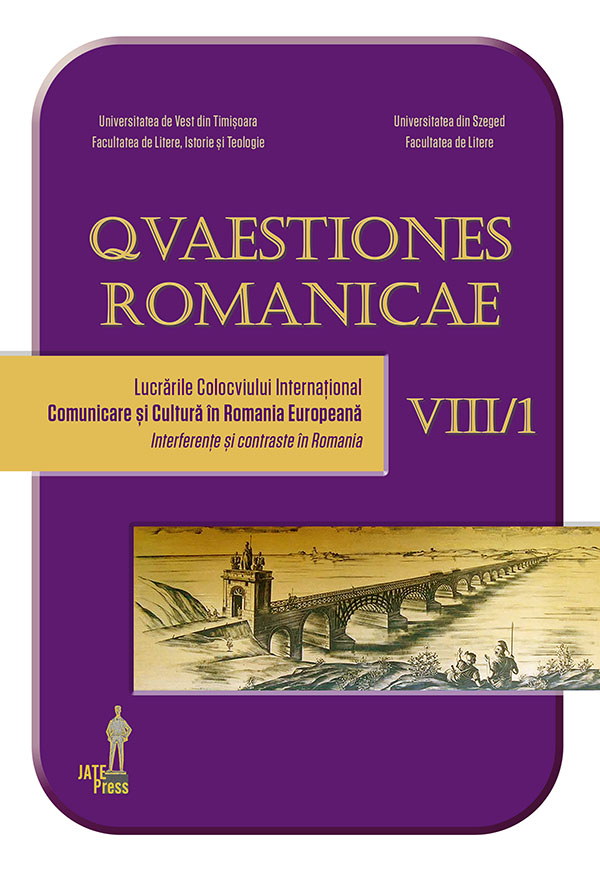Spazio e Identità: Paolo Rumiz in Appia
Abstract: (Space and Identity: Paolo Rumiz in Appia) Walking – a modality of exploration of space that has kept its nature since ancient times with its typical Franciscan humility and that transforms feet in “the noblest organs of sense” (Rumiz, Appia, 2017) – on the one hand, leads the traveler to grasp the ‘truth’ of places, on the other hand, it makes the journey, often an initiatory one, take the form of an immersion in an inner geography or, better, into a choreography in which the individual engaged in their identity (trans)formation seeks their roots. In the footsteps of the Roman legions, on a road defined by Publius Papinius Statius the longarum regina viarum (the queen of the long roads), that is the Via Appia, the architype of all roads, in 2015 Paolo Rumiz and his patrol, as modern ‘pilgrims’ or ‘wanderers’, embarked on a journey of rediscovery that became a real battle denouncing the commodification and neglect of the territory in an attempt to reconstruct a connection between their identity and this place and its history. Modernity has engulfed the ancient road, a reflection of the Empire’s past glories and power, once a symbol of civilization and superiority as well as of commercial power. While large stretches of the road are still preserved and walkable, the undertaking becomes difficult outside the suburb of the city of Rome. The present paper aims at investigating the sense of identity that emerges from this travel account: the first focus will be on the concept of personal identity, pondering whether Rumiz could be defined a modern pilgrim, a legionary or a wandered; the second point then concentrates on the socio-cultural and national identity, taking the first steps, as Rutilius Namatianus had done, from Rome – defined by the Roman poet in his De redito suo “regina tui pulcherrima mundi” (of your world, outstanding queen) – to discover the territory of the South.
Keywords: Rumiz, Appia, personal identity, national identity, travel, pilgrimage, battle.
Riassunto: Il camminare – modalità di esplorazione dello spazio che ha mantenuto fin dall’antichità la sua natura all’insegna della tipica umiltà francescana e che vede i piedi diventare “nobilissimi organi di senso” (Rumiz, Appia, 2017) – se da un lato porta il viaggiatore a cogliere la ‘verità’ dei luoghi, dall’altro, fa sì che il viaggio, spesso iniziatico, si configuri come un’immersione in una geografia o, meglio, una coreografia interiore in cui l’individuo nella sua (tras)formazione identitaria ricerca le proprie radici. Sulle tracce delle legioni romane, in quella che Publio Papinio Stazio definiva longarum regina viarum (regina delle lunghe strade) ossia la Via Appia, un archetipo di tutte le strade, nel 2015 Paolo Rumiz e la sua storica pattuglia, come moderni ‘pellegrini’ o ‘viandanti’, intraprende un viaggio di riscoperta che diventa una vera battaglia di denuncia contro la mercificazione e l’incuria del territorio nel tentativo di ricostruire un legame identitario con il luogo e la sua storia. La modernità ha oramai fagocitato l’antica via, riflesso delle passate glorie e della potenza dell’Impero, un tempo simbolo di civilizzazione e superiorità nonché di potenza commerciale. Mentre larghi tratti di strada sono ancora conservati e percorribili, l’impresa si fa ardua al di fuori del suburbio della città di Roma. Il presente elaborato si pone l’obiettivo di investigare il senso d’identità che emerge da queste pagine odeporiche: ci si concentrerà prima sul concetto di identità personale, chiedendosi se Rumiz possa essere definito un moderno pellegrino, un legionario o piuttosto un viandante, per poi esplorare l’identità socio-culturale e nazionale, partendo, come secoli prima aveva fatto Rutilio Namaziano, da Roma – definita dallo stesso poeta romano nel suo De reditu suo “regina tui pulcherrima mundi” (del tuo mondo, bellissima regina) (Pascoli, Poesie Varie, 1912) – alla scoperta delle terre del Sud.
Parole chiave: Rumiz, Appia, identità personale, identità nazionale, viaggio, pellegrinaggio, battaglia.
